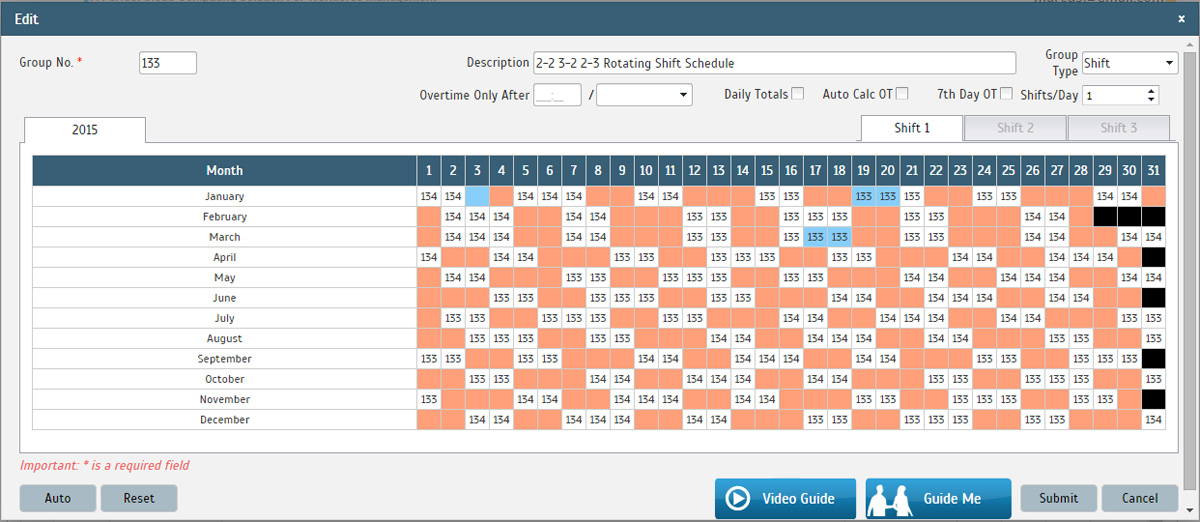Swing shift in British English. Noun US and Canadian. A group of workers who work a shift from late afternoon to midnight in an industry or occupation where a day shift or a night shift is also worked. Swing Shift is a 1984 American romantic drama war film directed by Jonathan Demme and produced by and starring Goldie Hawn with Kurt Russell.It also features Christine Lahti, Fred Ward, Ed Harris, and Holly Hunter, in one of her first movie roles.
- Definitions and Meaning of swing shift in English swing shift noun. The work shift during the evening (as 4 p.m. To midnight) Synonyms: evening shift.
- Rotational shift work is the type of shift work where your employer has broken up the work hours of the day into different sections. These sections are traditionally the 1st (early), 2nd (late) and 3rd (night) shift. The swing shift can also be included in the “rotation” too depending on your workplace.
How A Rotating Shift Schedule Can Double Productivity
If you manage a business that’s open for fourteen, sixteen, or even twenty-four hours, how do you schedule your employees? Do you make one team always work nights and the other team always work days? When do your employees get time off?
When you start to think about the logistics of it all, you can see how scheduling could become a chaotic nightmare very quickly. Thankfully, there is a simple solution to this dilemma: the rotating shift.
In a rotating schedule, employees work the day shift for one or two weeks and then switch to working the night shift for one or two weeks. This keeps all your operating hours covered while still giving your employees regular time off.
The rotating shift also has benefits for restaurants where the dinner service may make more money than the lunch service. If you restrict one team to the less-desirable shift, this can seriously affect employee morale and productivity.
The rotating shift schedule gives all team members the opportunity to cycle through working both the dinner service and the lunch service.
We’ve created this guide to show the ins-and-outs of the rotating shift schedule, including the advantages and disadvantages, and how to set up a rotating schedule of your own. Let’s get started.
What Is A Rotating Shift?
Rotational shift work — or rotating shift for short — is a scheduling system where employees move through a cycle of working the day shift, the night shift, and any swing shifts that may be necessary.
The “opposite” of a rotating shift is a fixed schedule. The fixed schedule means that one group of employees will work the day shift, one group will work the night shift, and one group will work the swing shift. The fixed schedule does not change, so employees will always work those hours unless you intentionally move them to a different shift.
To help you understand the rotating shift better, let’s examine a brief illustration. Let’s say you run a restaurant that operates from 8 a.m. to 12 a.m. The restaurant may not be open for all of those sixteen hours, but employees are, at the very least, prepping and cleaning between those times.
The simplest way to schedule workers is to break the sixteen hours into two eight-hour shifts. The first shift would run from 8 a.m. to 4 p.m. The second shift would run from 4 p.m. to 12 a.m.
So we’re back to one of the questions we posed at the start: do you make one team always work nights and the other team always work days? For office work or manufacturing, this may be the best choice because one shift is just like any other.
But for businesses like restaurants, one shift may make more money than the others. Restricting one group of employees to the less-desirable shift is not a good way to foster a productive team.
To make sure all your employees can work the higher-paying shift, you can leverage the rotating shift system. In a rotating shift system, one week, team A works the opening shift (8 a.m. to 4 p.m.) while team B works the closing shift (4 p.m. to 12 a.m.).

The next week, team B works the opening shift while team A works the closing shift. The following week, team A is back on the opening shift while team B is on the closing shift. That’s the broad strokes of a rotating shift.
Again, we’ll show you how to make it work for your business later in this guide. First, though, let’s examine the advantages and disadvantages of the rotating shift.
Advantages Of The Rotating Shift
For a restaurant, the rotating shift schedule gives everyone a chance to work both a high-dollar shift (dinner service) and a day shift (lunch service). Allowing all employees to work a high-dollar shift on a regular basis serves two important purposes:
- It keeps employees engaged because they know they will have their share of busy shifts.
- It gives all employees the opportunity to learn how to work during peak hours.
Similarly, rotating even your most senior and skilled workers through the day shift helps establish the lunch service as a strong customer experience. That can boost sales and be good for everyone — employees and business alike.
Another advantage of the rotating shift is that it gives you time to train all your employees without cutting into the dinner service. The opening hours are typically less busy than the afternoon and evening hours, so it’s easier to set up a short training meeting first thing in the morning.
Team A gets to benefit from the training one week, and team B gets to benefit from the training the next week.
Disadvantages Of The Rotating Shift
Swing Shift Meaning Time
The primary disadvantage of the rotating shift is that employees may prefer to have a consistent schedule (the fixed shift). When your employees are on a fixed shift, planning the rest of their life becomes much simpler.
This is because the employee knows they are always working days or always working nights. They don’t have to keep track of which week within the rotating shift they’re currently on.
Double dragon game free downloadmultiprogramem. The second disadvantage of the rotating shift is the physical impact it can have on your employees. Your body operates on a twenty-four-hour cycle (your circadian rhythm) where activity during the day and slowing down to sleep during the evening hours is “natural.”
Forcing your circadian rhythm to change — by working the night shift — can cause sleep deprivation, gastrointestinal disorders, and cardiovascular disorders. Some people can adapt in two or three days, while others take longer. Some people’s circadian rhythms never adjust.
One way to make the adjustment to a rotating shift easier on your employees’ bodies is to extend the rotating shift to two or three weeks instead of one. That would mean that team A works the opening shift for two weeks and team B works the closing shift for two weeks. Then, team B works the opening shift for two weeks and team A works the closing shift.
The next month, the cycle starts again. It’s also critical to get feedback from your employees as to what system works best for them.
How To Set Up A Rotating Shift
The most basic rotating schedule is the one mentioned above where team A and team B switch shifts every two weeks. Unfortunately, that scenario is a bit too simplistic. You need to take into account how many days per week your employees work. You also need to account for weekends, time off, and the like.
We’re going to show you how to set up what’s known as a “2-2 3-2 2-3” rotating shift schedule. This rotating shift gets its name from the pattern of days that each employee works:
- Two days or nights on, two off (2-2)
- Three days or nights on, two off (3-2)
- Two days or nights on, three off (2-3)
Other common rotating schedules include 2-2-3, 3-2-2-3, and 3-2-2. All of these indicate the number of days worked and the number of days off.
To illustrate the 2-2 3-2 2-3 schedule, we’ll go back to the restaurant example used at the beginning of this article. Here are the details of the restaurant:
- The restaurant is open for sixteen hours a day.
- It’s open seven days a week.
- It employs forty people in various jobs.
- A shift requires ten employees.
- A full day’s worth of operation requires two shifts.
With those details established, we can now create the rotating schedule.
1) Divide The Forty Employees Into Four Teams


Let’s say you need two cooks, two food runners, four servers, one bartender, and one host to fill out your shift. Each team should be composed of employees who can do those jobs.
You can switch cooks or servers or bartenders amongst teams to really get things rotating, but for now, just put everyone in one team and leave them there. For the purposes of this how-to, we’ll label the teams A, B, C, and D.
2) Assign Teams To One Of Four Rotating Shift Schedules
This rotating shift schedule is built on a two-week rotation. That means that each team will work a specific shift for two weeks before switching.
If you’ve balanced your teams skill-wise, it doesn’t matter which team goes in which shift. The teams will be rotated through all four every few weeks. Here’s an example. D=Day Shift, N=Night Shift, O=Off and the hyphen indicates a new week.
- Team A: DDOODDD – OODDOOO – NNOONNN – OONNOOO
- Team B: NNOONNN – OONNOOO – DDOODDD – OODDOOO
- Team C: OONNOOO – DDOODDD – OODDOOO – NNOONNN
- Team D: OODDOOO – NNOONNN – OONNOOO – DDOODDD

Everyone rotates through the same pattern of days, nights, and time off. They just start at different points so that all days and times are covered.
Other Common Types Of Rotating Shift Schedule
The common types of rotating shift schedule in this section use either a 10-hour shift or a 12-hour shift to give you 24/7 coverage if you need it.
If your business isn’t open 24 hours a day, you can alter these schedules to fit the work hours that are right for you and your employees.
DuPont
The DuPont rotating shift schedule uses four teams working two 12-hour shifts.
Each team works a four-week cycle that consists of:
- Four nights or evenings ON
- Three days OFF
- Three days ON
- One day OFF
- Three nights or evenings ON
- Three days OFF
- Four days ON
- Seven days OFF
In this type of rotating schedule, team members work, on average, 42 hours per week, so you’ll need to keep an eye on overtime in order to control labor costs.
Pitman
Like the DuPont schedule, the Pitman schedule uses four teams working two 12-hour shifts.
In the Pitman, though, each team works a two-week cycle that looks like this (“D” = Days, “O” = Off, “N” = Nights):
- Team 1: DDOODDD-OODDOOO
- Team 2: NNOONNN-OONNOOO
- Team 3: OODDOOO-NNOONNN
- Team 4: OONNOOO-DDOODDD
With the Pitman, you can either keep the shifts the same in the next four-week cycle or rotate the teams to a different format (e.g., Team 2 works DDOODDD-OODDOOO and Team 4 works NNOOONNN-OONNOO).
On average, employees will work 42 hours per week on the Pitman schedule.
24-48
The 24-48 shift pattern (a.k.a. the ABC) uses three teams working 24-hour shifts.
In the 24-48 schedule, each team works a three-day cycle that consists of:
- 24 hours ON
- 48 hours OFF
So Team 1 (or A) works Monday and then has Tuesday and Wednesday off. Team 2 (or B) works Tuesday and then has Wednesday and Thursday off. Team 3 (or C) works Wednesday and then has Thursday and Friday off.
4-3
The 4-3 schedule uses six teams working overlapping 10-hour shifts for 24/7 coverage. You can tailor the 4-3 schedule to cover any amount of time that your business is open.
In the 4-3 schedule, each team works a three-week cycle that consists of:
- Four days ON (first shift)
- Three days OFF
- Four days ON (second shift)
- Three days OFF
- Four days ON (third shift)
This schedule type is useful because teams will overlap work hours. You can use this overlap to cover high activity periods.
6-4 6-4 6-4
Swing Shift Hours Meaning
The 6-4 6-4 6-4 schedule uses five teams working overlapping 10-hour shifts. In this shift schedule, each team works a 30-day cycle that consists of:
- Six days ON (first shift)
- Four days OFF
- Six days ON (second shift)
- Four days OFF
- Six days ON (third shift)
- Four days OFF

Like the 4-3 schedule, you can tailor the 6-4 6-4 6-4 to cover shifts of any length. For example, your first shift can be from 8 a.m. to 12 p.m. Your second shift can be from 12 p.m. to 4 p.m. And your third shift can be from 4 p.m. to 8 p.m.
5-3 5-4 5-3
The 5-3 5-4 5-3 rotating shift schedule uses five teams working overlapping shifts to provide full coverage for your business.
In the 5-3 5-4 5-3 schedule, each team works a 25-day cycle that consists of:
- Five days ON (first shift)
- Three days OFF
- Five days ON (second shift)
- Four days OFF
- Five days ON (third shift)
- Three days OFF
What Is A Swing Shift Schedule
A key variable of the 5-3 5-4 5-3 schedule is that you can mix the shifts from one week to the next. The teams don’t have to work first shift then second shift then third shift. You could set it up so that Team 1 works first shift one week, third shift the next week, and second shift the last week.
4-2 4-3 4-3
The 4-2 4-3 4-3 schedule uses five teams working overlapping shifts of variable length to provide your business full coverage throughout the workday.
In the 4-2 4-3 4-3 schedule, each team works a 20-day cycle that consists of:
- Four days ON (first shift)
- Two days OFF
- Four days ON (second shift)
- Three days OFF
- Four days ON (third shift)
- Three days OFF
If your business is open 24 hours a day, each shift will last 10 hours. The 10-hour workday provides specific hours when extra manpower is present to help cover increased activity. You can reduce the length of each shift if you don’t need the overlap.
Use The Right Tool To Organize Your Schedule
Whether you choose to use a fixed shift schedule, a rotating shift schedule, a split shift, or even a compressed workweek for your business, you still need the right tool to help make your scheduling system successful.
We developed Sling to streamline the scheduling process and make even the most complicated rotating shift schedule run like clockwork.
And Sling is about more than just plugging names into time slots. It’s about making every aspect of your job — from scheduling and distribution to communication and tracking — easier and faster.
The intuitive and well-organized scheduling tools Sling offers make it simple to create clear, easy-to-read schedules with just a few clicks of the mouse or taps on the screen. And Sling’s cloud-based platform streamlines the process of sending the schedule to everyone who needs it. Just post your schedule in the cloud for all to see.
You can even control exactly who can view the schedule and who can make changes to it. All you have to do is give individuals permission or send them a link. They can then log in to Sling to view or edit the schedule anytime, anywhere.
Sling’s cloud-based program also provides a central location where employees can indicate when they’re available to work. Sling then displays reminders about double-bookings, time-off requests, and unavailability while you’re creating your schedule.
But remember, Sling is about more than just scheduling. In addition to the power of its onboard schedule maker, Sling brings together two additional toolsets to make your work life easier: time tracking and labor cost control.
During the workweek, Sling’s unique time-tracking features allow you to turn any phone, tablet, or computer into a fully-functional time clock that your employees can use to clock in and out.
Sling will even notify you (and them) about upcoming shifts and whether an employee is running late or forgot to check in.
At the end of the workweek, just a few clicks or taps is all it takes to export your employees’ timesheets for payroll processing. Simply review the timesheets, edit and approve, and then send them to your choice of third-party program for seamless payroll calculation and distribution.
You can then go back and use Sling’s labor cost tools to measure, manage, and optimize your spending as you schedule.
No more endless revisions trying to squeeze all the shifts and work necessary under your existing budget. One pass through the schedule and you’ll know if you’ve exceeded your labor costs or not. Then it’s just a few clicks here and there to bring your spending back into the black.
All that and more helps managers bring teams together, keep everyone informed and engaged, and build a better work culture regardless of the schedule they use.
Working Swing Shifts
For more free resources to help you manage your business better, organize and schedule your team, and track and calculate labor costs, visit GetSling.com today.
